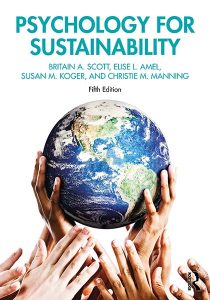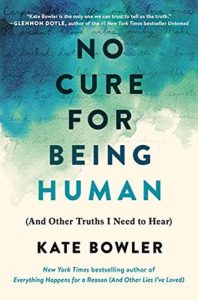
Brianne Harrison Moore ’05, A Bright Young Thing (Alcove Press, 2021)
Lesson learned: Writing funny is hard—harder than writing drama or tragedy, I think. I have even more respect for comedy writers now than I did before I wrote this book (and I had quite a bit of respect for them already)!
Advice for writers: Don’t get too caught up in working out every little detail of your story before you start writing. I smooth out a lot of narrative snags in the drafting or revising stages—I think it helps to just start getting your ideas on paper. Also, don’t let yourself get bogged down in trying to perfect your first draft as you go. The first draft is terrible. It’s meant to be! It’s rough; you’re just trying to get the bones of your story down. You’ll fix and rewrite and pretty things up on the second, third, or sixth go-round.
Long journey: The story was originally inspired by one of the subplots in Robert Altman’s 2001 film Gosford Park. The main character, Astra, was built up from the name, which I thought sounded rather lovely. I imagined what the woman who had that name would be like, and realized she’d be the perfect heroine for this story idea I’d had. I began writing it my senior year at Mac, almost 20 years ago now! It has, of course, undergone some major revisions in that time—I was even revising it as my agent was submitting to publishing houses, working off feedback we were getting from editors. Some of the biggest elements of the story weren’t present at all in the first several drafts.
John Koenig ’06, The Dictionary of Obscure Sorrows (Simon & Schuster, 2021)
In his New York Times best seller, an original dictionary of made-up words, John Koenig fills gaps in the language with hundreds of new terms for emotions. He shares three:
immerensis n. the maddening inability to understand the reasons why someone loves you—almost as if you’re selling them a used car that you know has a ton of problems and requires daily tinkering just to get it to run normally, but no matter how much you try to warn them, they seem all the more eager to hop behind the wheel and see where this puppy can go.
lilo n. a friendship that can lie dormant for years only to pick right back up instantly, as if you’d seen each other last week—which is all the more remarkable given that certain other people can make every lull in conversation feel like an eternity.
sonder n. the realization that each random passerby is living a life as vivid and complex as your own—populated with their own ambitions, friends, routines, worries, and inherited craziness—an epic story that continues invisibly around you like an anthill sprawling deep underground, with elaborate passageways to thousands of other lives that you’ll never know existed, in which you might appear only once, as an extra sipping coffee in the background, as a blur of traffic passing on the highway, as a lighted window at dusk.
Alessandra Williams ’07, Ananya Chatterjea, and Hui Wilcox, editors, Dancing Transnational Feminisms: Ananya Dance Theatre and the Art of Social Justice (University of Washington Press, 2021)
How it started: I connected with Ananya Dance Theatre (ADT) through my American studies coursework and as a Mellon Mays Undergraduate Fellow (MMUF) at Macalester. My professor at the time, Peter Rachleff, took MMUF students to ADT’s first performance at the Southern Theater in Minneapolis in 2005, Bandh: Meditation on Dream, as well as Duurbaar: Journeys into Horizon in 2006. I was struck by how choreographer Ananya Chatterjea crafted a dance ensemble of diverse Black, Native, Brown femmes and women toward storytelling about access to vital resources such as water and global experiences of race and gender. In 2006, I joined ADT as an apprentice artist while I was beginning my senior year.
Collaborative effort: Ananya Chatterjea, Hui Wilcox, and I began putting this anthology together in 2012 while I was still a PhD student in culture and performance at the University of California, Los Angeles. All three of us were also ADT artists over the course of those many years, so we would work on the book after hours of grueling rehearsal, then hold heated debates over how to best convey our ideas in the introduction. Working with my colleagues inspired me, challenged me, and really catapulted me forward with my own ideas.
The power of dance: Dance plays a critical role in highlighting the stories and movements for social justice in Black, Indigenous, and communities of color. When dance is intentionally and critically rooted in practices of Black and Brown women and femmes, it offers a meaningful example of how choreography uncovers the human impact of—and offers a vision of hope amidst transnational concerns such as environmental injustice and systemic gender-based violence. This anthology seeks to unearth how artists hold themselves accountable to movements for social change.
 Christie Manning, director of sustainability and professor of environmental studies, with Britain A. Scott, Elise L. Amel, and Susan M. Koger, Psychology for Sustainability, 5th Edition (Routledge, 2021)
Christie Manning, director of sustainability and professor of environmental studies, with Britain A. Scott, Elise L. Amel, and Susan M. Koger, Psychology for Sustainability, 5th Edition (Routledge, 2021)
Bethany Catlin ’19, Theme & Variations: Poems in Four Movements (self-published, 2021)
Jessica M. Smith ’03, Extracting Accountability: Engineers and Corporate Social Responsibility (MIT Press, 2021)
M.V. Montgomery ’83, Cosmological Sonnets and Lectures (Winter Goose, 2021)
David Blaney, G. Theodore Mitau Professor of Political Science, and Naeem Inayatullah, Within, Against, and Beyond Liberalism: A Critique of Liberal IPE and Global Capitalism (Rowman & Littlefield, 2021)
 Gerald R. Pitzl, professor emeritus of geography, True North: Victory in the Race to the Pole (Page Publishing, 2021)
Gerald R. Pitzl, professor emeritus of geography, True North: Victory in the Race to the Pole (Page Publishing, 2021)
Stanley M. Berry ’75, A Fight for Full Disclosure (Moonshine Cove Publishing, 2021)
Kate Bowler ’02, No Cure for Being Human (And Other Truths I Need to Hear) (Random House, 2021)
Dave Zirin ’96, The Kaepernick Effect: Taking a Knee, Changing the World (The New Press, 2021)
January 25 2022
Back to top





